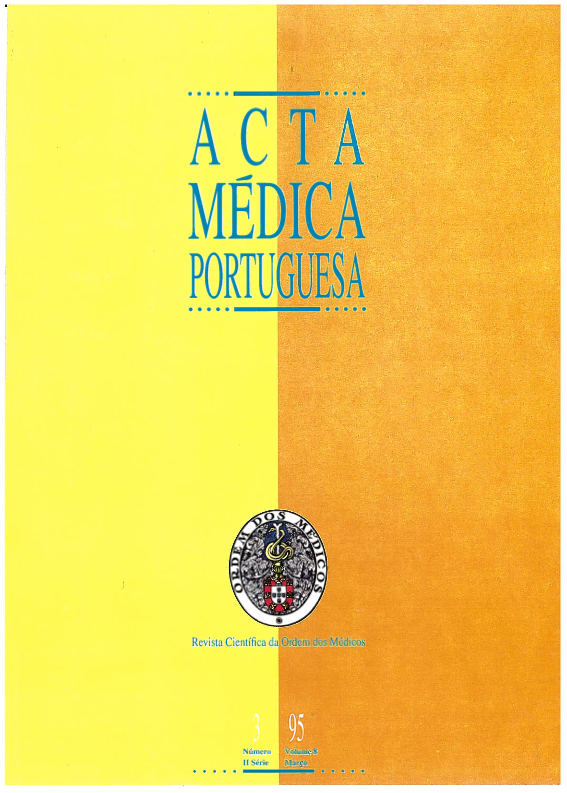Repercussão da idade da mulher, da taxa de clivagem e da qualidade embrionária, na obtenção de gravidez por fertilização in vitro.
DOI:
https://doi.org/10.20344/amp.2682Resumo
Multiple factors influence the probability of obtaining a pregnancy through in vitro fertilization (IVF) and embryo transfer (ET). This retrospective study was designed to assess their importance in order to improve prognostic ability and treatment success. 341 consecutive embryo transfer cycles using the same ovarian stimulation protocol were considered and divided in two main groups: 92 cycles in which a clinical pregnancy was achieved and 249 cycles without success. All the embryo transfers were performed in patients from the in vitro fertilization program of the Human Reproductive Unit, Santa Maria Hospital, Lisbon, between January 1991 and December 1993. No significant differences were found between the two groups studied concerning the IVF indications, ovarian response to the stimulation, sperm quality, oocyte maturation and mean number of oocytes retrieved per patient. The women's age was higher in the group which did not achieve a pregnancy, when compared with the pregnant group (p < 0.001), showing a decline of success after the age of 35. Overall oocyte fertilization rate was 88.2% in cycles with pregnancy and 83.5% in cycles without pregnancy (p < 0.02). In the pregnant patients, there was a significantly higher rate of embryo transfers in which all the embryos received had reached at least the four-cell stage at 42-43 hr postinsemination, compared with the non pregnant patients (82% versus 63%, p < 0.001). All the 92 pregnancies originated from transfers of at least one embryo that had undergone two or more mitotic divisions.(ABSTRACT TRUNCATED AT 250 WORDS)Downloads
Downloads
Como Citar
Edição
Secção
Licença
Todos os artigos publicados na AMP são de acesso aberto e cumprem os requisitos das agências de financiamento ou instituições académicas. Relativamente à utilização por terceiros a AMP rege-se pelos termos da licença Creative Commons ‘Atribuição – Uso Não-Comercial – (CC-BY-NC)’.
É da responsabilidade do autor obter permissão para reproduzir figuras, tabelas, etc., de outras publicações. Após a aceitação de um artigo, os autores serão convidados a preencher uma “Declaração de Responsabilidade Autoral e Partilha de Direitos de Autor “(http://www.actamedicaportuguesa.com/info/AMP-NormasPublicacao.pdf) e a “Declaração de Potenciais Conflitos de Interesse” (http://www.icmje.org/conflicts-of-interest) do ICMJE. Será enviado um e-mail ao autor correspondente, confirmando a receção do manuscrito.
Após a publicação, os autores ficam autorizados a disponibilizar os seus artigos em repositórios das suas instituições de origem, desde que mencionem sempre onde foram publicados e de acordo com a licença Creative Commons









